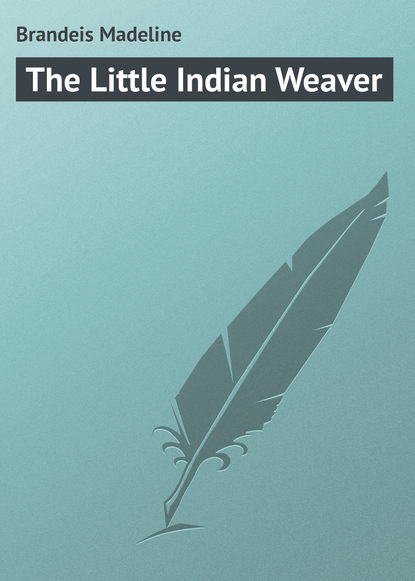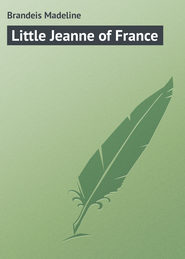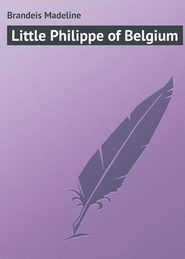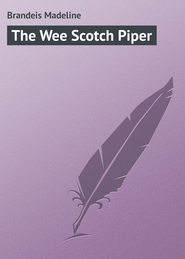По всем вопросам обращайтесь на: info@litportal.ru
(©) 2003-2024.
✖
The Little Indian Weaver
Настройки чтения
Размер шрифта
Высота строк
Поля
ALL ABOUT THE INDIANS
The Navajo Indians live in hogans. That, you already have heard – and you know what a hogan looks like. But all Indian tribes do not use the same kind of dwelling places.
The Pueblo, Hopi and other peaceful tribes live in what are called pueblos. They are houses built of adobe and they are built to resemble a child's stone blocks when he has piled one on top of the other. To reach the top of a pueblo one must climb the ladders which are set up against the outside of the building.
The Pueblo villages are different from the Navajo villages. They are composed of long rows of these pinkish adobe block houses, and the Indian tribes who live therein are, as I have said, peaceful.
Can you imagine why, being as they are of a peaceful nature, these tribes build as they do? It is so that they can be protected from warlike tribes, in their many storied houses. Then, too, the tribes which build pueblos do not wander, as the warlike tribes do. The pueblos are stationary, and they are built to be permanent homes. They are built, mainly, by the women and children, who do all the manual work – while the men often sit at home weaving garments and knitting stockings.
The tepees are the abode of warlike Indians, such as the Sioux, Apaches, etc. They wander and so they build temporary dwellings which, at a moment's notice, may be transported quickly and easily from one location to another.
In the East there are other Indian tribes, and also in Canada. Then, in Mexico, the Indians build straw huts.
There are hundreds of tribes of Indians and each tribe has a different language. That is why the sign language came into existence. It is used when a member of one tribe meets a member of another tribe. They cannot understand each other's language, so they talk with their hands.
When the Indian chiefs gather they smoke the pipe of peace. This is usually done to celebrate some victory, or upon the occasion of a visit from a member of another tribe.
The men sit around a fire in a circle and pass the long pipe from one to the other. As each man receives it he utters a sound or nods his head, proceeds to take a puff, and passes it to his neighbor. It is all done silently and quietly, but there is a wealth of meaning in this very solemn performance.
The Indians, in older days, made fire entirely by friction. By the rubbing together of two pieces of wood, most of the tribes caused fire to appear – but some had elaborate devices made of wood and string. The Navajos used a thin pole which they twirled around by using a string tied to a stick.
Today, the Indians use matches just as we do, but most families still keep their fire-makers.
The Navajos do not use feathers and do not make chiefs by crowning them. But many of the other tribes create their chiefs by placing the crown of tall feathers, which you have often seen in pictures, upon the head of the "brave," and saying "I make you 'Big Chief Flying Eagle,'" or whatever the name may be.
The eagle is much venerated by the Indians. We have seen how Bah used a prayer stick made of an eagle feather.
In the Eagle Dance, the dancer paints his body red, black and white, and wears a dance skirt and bonnet of eagle feathers.
The dance is performed as a ceremonial, mostly as a plea for rain. The dancers imitate almost every movement of the great eagle. They soar, they hover as an eagle would hover over the fields. They spread their wings and move about in a great circle.
This and the Sun Dance are the two most important and interesting dances of the Indians; the Sun Dance is performed in the spring, celebrating the return of the growing season, and the growth of the corn.
"Oh, I hope I can remember all that," sighed Billy, when Mrs. Fighting Bull finished talking.
She turned to her weaving without answering him, and he turned to Bah, saying: "Come, Bah! Let us play over at your hogan and you pretend to make me a Big Chief!"
"Yes, come," said Bah, rising.
They started over to their play house. From out the play hogan Bah pulled forth some Navajo blankets and then they both set to work to make a feather crown. Having no feathers (the Navajos not using them) they made their crown of branches.
It was a large and weighty object when they finished with it and Billy was, indeed, a queer sight when Bah placed it upon his head. The big blanket was wrapped about him, and from beneath the crown peered his freckled face. With all due ceremony Bah raised her eyes to heaven and chanted: "I make you Big Chief Spots-In-The-Face!"
It was a very serious moment for them. Billy had become a chief, and his next move was to propose the smoking of the pipe of peace. From his pocket Billy pulled a chocolate pipe. It was done up in silver paper. Bah was impressed as he carefully unwrapped and handed it to her.
"You smoke first," he said.
She took it in her hands and putting it to her mouth pretended to draw in the smoke. She handed it to Billy, but he proceeded to bite out a piece, much to the astonishment of his playmate, who stared at him in wonderment.
"You do that, too, Bah, it's good," Billy mumbled with his mouth full.
Bah shrank back. "No, me no eat pipe, me smoke!"
Billy couldn't help laughing.
"Oh, but this isn't a real pipe – it's chocolate!"
Still Bah was reluctant to try.
"Well," said Billy, digging into his pocket for the rest of the candy. "Here's another, the same – only it's not in the shape of a pipe. Try it."
Bah took the candy and looked at it.
"Fish!" she gasped and dropped it.
"Well, what's the matter with that?" asked Billy, greatly disturbed by her evident horror.
"Bah no eat fish. No Navajo eat fish!" "Tell me why," said Billy, now amused and interested.
Bah did not answer, but pointed over to her mother. She hung her head shyly. Billy didn't like to press her, so, dragging his blanket, and with his crown over one ear, he stumbled over to the loom and stood before Mrs. Fighting Bull with the query: "Why don't Navajos like fish?"
Mrs. Fighting Bull did not smile, for once, and replied: "Not because no like! No eat because ancestors once turned into fish. If Navajo eat fish, he eat ancestor!"
Satisfied with this explanation, Billy thanked her and trotted back to his friend. "I understand now, Bah," he said. "But you see this isn't a real fish, it's candy! You try."
He held it up to her, but he could see how she shrank from the thought of eating anything that was even the shape of fish. So he picked out a bird and gave it to her. After she had sampled the chocolate she was delighted to finish the whole piece, and when that was eaten, she said: "Now me smoke pipe of peace."
"Yes," said Billy, "and this time you'll eat a piece of the pipe, won't you?"
He laughed loudly at his own joke, but Bah was too absorbed in her new found game. When Billy reached for the pipe, expecting to receive it for his turn, he saw that the little girl had put the whole pipe into her mouth and was munching the chocolate, her cheeks puffed out and a twinkle in her eye! Billy stared in surprise.
"Why, Bah, you bad girl. You ate up all the pipe!"
But they soon found another game to replace the "Peace Pipe" and played together happily until it was time for Billy to go home.
Before leaving he remembered that he had not thanked the Indian woman for telling him so much of interest. He ran back to where she was sitting, and, drawing from his pocket the chocolate candies, he offered them to her, saying: "Thanks so much for your nice story. Won't you have some candy?"
She took some and smiled at him. Then she said: "Write nice story about Indians. All white men no think Indians good."
Billy was puzzled for a moment to know what she meant. Then it dawned upon him that the Indians were often spoken of as cruel and savage. Well, he'd "tell the world" in his story that this family was kind and civilized. He said: "Oh, yes, I'll say everything I think about you, and that will be good!"
Then, suddenly bethinking himself of a word he'd once heard, he asked: "Isn't an Indian woman called a 'Squaw'?"
Bah's mother shook her head and a slight frown – the first Billy had seen – appeared between her eyes.
"No. Indian woman no like to be called Squaw! Not very nice! In reservation she fight when man call that!"
"Well, I'll remember and never use the word 'Squaw' again," promised Billy.
The Navajo Indians live in hogans. That, you already have heard – and you know what a hogan looks like. But all Indian tribes do not use the same kind of dwelling places.
The Pueblo, Hopi and other peaceful tribes live in what are called pueblos. They are houses built of adobe and they are built to resemble a child's stone blocks when he has piled one on top of the other. To reach the top of a pueblo one must climb the ladders which are set up against the outside of the building.
The Pueblo villages are different from the Navajo villages. They are composed of long rows of these pinkish adobe block houses, and the Indian tribes who live therein are, as I have said, peaceful.
Can you imagine why, being as they are of a peaceful nature, these tribes build as they do? It is so that they can be protected from warlike tribes, in their many storied houses. Then, too, the tribes which build pueblos do not wander, as the warlike tribes do. The pueblos are stationary, and they are built to be permanent homes. They are built, mainly, by the women and children, who do all the manual work – while the men often sit at home weaving garments and knitting stockings.
The tepees are the abode of warlike Indians, such as the Sioux, Apaches, etc. They wander and so they build temporary dwellings which, at a moment's notice, may be transported quickly and easily from one location to another.
In the East there are other Indian tribes, and also in Canada. Then, in Mexico, the Indians build straw huts.
There are hundreds of tribes of Indians and each tribe has a different language. That is why the sign language came into existence. It is used when a member of one tribe meets a member of another tribe. They cannot understand each other's language, so they talk with their hands.
When the Indian chiefs gather they smoke the pipe of peace. This is usually done to celebrate some victory, or upon the occasion of a visit from a member of another tribe.
The men sit around a fire in a circle and pass the long pipe from one to the other. As each man receives it he utters a sound or nods his head, proceeds to take a puff, and passes it to his neighbor. It is all done silently and quietly, but there is a wealth of meaning in this very solemn performance.
The Indians, in older days, made fire entirely by friction. By the rubbing together of two pieces of wood, most of the tribes caused fire to appear – but some had elaborate devices made of wood and string. The Navajos used a thin pole which they twirled around by using a string tied to a stick.
Today, the Indians use matches just as we do, but most families still keep their fire-makers.
The Navajos do not use feathers and do not make chiefs by crowning them. But many of the other tribes create their chiefs by placing the crown of tall feathers, which you have often seen in pictures, upon the head of the "brave," and saying "I make you 'Big Chief Flying Eagle,'" or whatever the name may be.
The eagle is much venerated by the Indians. We have seen how Bah used a prayer stick made of an eagle feather.
In the Eagle Dance, the dancer paints his body red, black and white, and wears a dance skirt and bonnet of eagle feathers.
The dance is performed as a ceremonial, mostly as a plea for rain. The dancers imitate almost every movement of the great eagle. They soar, they hover as an eagle would hover over the fields. They spread their wings and move about in a great circle.
This and the Sun Dance are the two most important and interesting dances of the Indians; the Sun Dance is performed in the spring, celebrating the return of the growing season, and the growth of the corn.
"Oh, I hope I can remember all that," sighed Billy, when Mrs. Fighting Bull finished talking.
She turned to her weaving without answering him, and he turned to Bah, saying: "Come, Bah! Let us play over at your hogan and you pretend to make me a Big Chief!"
"Yes, come," said Bah, rising.
They started over to their play house. From out the play hogan Bah pulled forth some Navajo blankets and then they both set to work to make a feather crown. Having no feathers (the Navajos not using them) they made their crown of branches.
It was a large and weighty object when they finished with it and Billy was, indeed, a queer sight when Bah placed it upon his head. The big blanket was wrapped about him, and from beneath the crown peered his freckled face. With all due ceremony Bah raised her eyes to heaven and chanted: "I make you Big Chief Spots-In-The-Face!"
It was a very serious moment for them. Billy had become a chief, and his next move was to propose the smoking of the pipe of peace. From his pocket Billy pulled a chocolate pipe. It was done up in silver paper. Bah was impressed as he carefully unwrapped and handed it to her.
"You smoke first," he said.
She took it in her hands and putting it to her mouth pretended to draw in the smoke. She handed it to Billy, but he proceeded to bite out a piece, much to the astonishment of his playmate, who stared at him in wonderment.
"You do that, too, Bah, it's good," Billy mumbled with his mouth full.
Bah shrank back. "No, me no eat pipe, me smoke!"
Billy couldn't help laughing.
"Oh, but this isn't a real pipe – it's chocolate!"
Still Bah was reluctant to try.
"Well," said Billy, digging into his pocket for the rest of the candy. "Here's another, the same – only it's not in the shape of a pipe. Try it."
Bah took the candy and looked at it.
"Fish!" she gasped and dropped it.
"Well, what's the matter with that?" asked Billy, greatly disturbed by her evident horror.
"Bah no eat fish. No Navajo eat fish!" "Tell me why," said Billy, now amused and interested.
Bah did not answer, but pointed over to her mother. She hung her head shyly. Billy didn't like to press her, so, dragging his blanket, and with his crown over one ear, he stumbled over to the loom and stood before Mrs. Fighting Bull with the query: "Why don't Navajos like fish?"
Mrs. Fighting Bull did not smile, for once, and replied: "Not because no like! No eat because ancestors once turned into fish. If Navajo eat fish, he eat ancestor!"
Satisfied with this explanation, Billy thanked her and trotted back to his friend. "I understand now, Bah," he said. "But you see this isn't a real fish, it's candy! You try."
He held it up to her, but he could see how she shrank from the thought of eating anything that was even the shape of fish. So he picked out a bird and gave it to her. After she had sampled the chocolate she was delighted to finish the whole piece, and when that was eaten, she said: "Now me smoke pipe of peace."
"Yes," said Billy, "and this time you'll eat a piece of the pipe, won't you?"
He laughed loudly at his own joke, but Bah was too absorbed in her new found game. When Billy reached for the pipe, expecting to receive it for his turn, he saw that the little girl had put the whole pipe into her mouth and was munching the chocolate, her cheeks puffed out and a twinkle in her eye! Billy stared in surprise.
"Why, Bah, you bad girl. You ate up all the pipe!"
But they soon found another game to replace the "Peace Pipe" and played together happily until it was time for Billy to go home.
Before leaving he remembered that he had not thanked the Indian woman for telling him so much of interest. He ran back to where she was sitting, and, drawing from his pocket the chocolate candies, he offered them to her, saying: "Thanks so much for your nice story. Won't you have some candy?"
She took some and smiled at him. Then she said: "Write nice story about Indians. All white men no think Indians good."
Billy was puzzled for a moment to know what she meant. Then it dawned upon him that the Indians were often spoken of as cruel and savage. Well, he'd "tell the world" in his story that this family was kind and civilized. He said: "Oh, yes, I'll say everything I think about you, and that will be good!"
Then, suddenly bethinking himself of a word he'd once heard, he asked: "Isn't an Indian woman called a 'Squaw'?"
Bah's mother shook her head and a slight frown – the first Billy had seen – appeared between her eyes.
"No. Indian woman no like to be called Squaw! Not very nice! In reservation she fight when man call that!"
"Well, I'll remember and never use the word 'Squaw' again," promised Billy.









